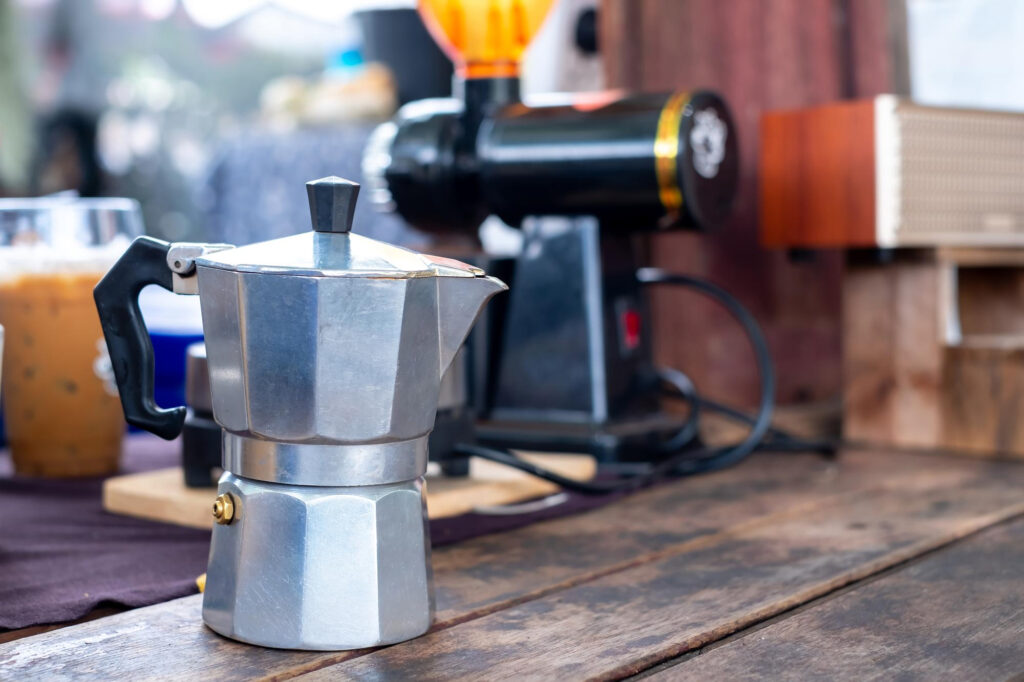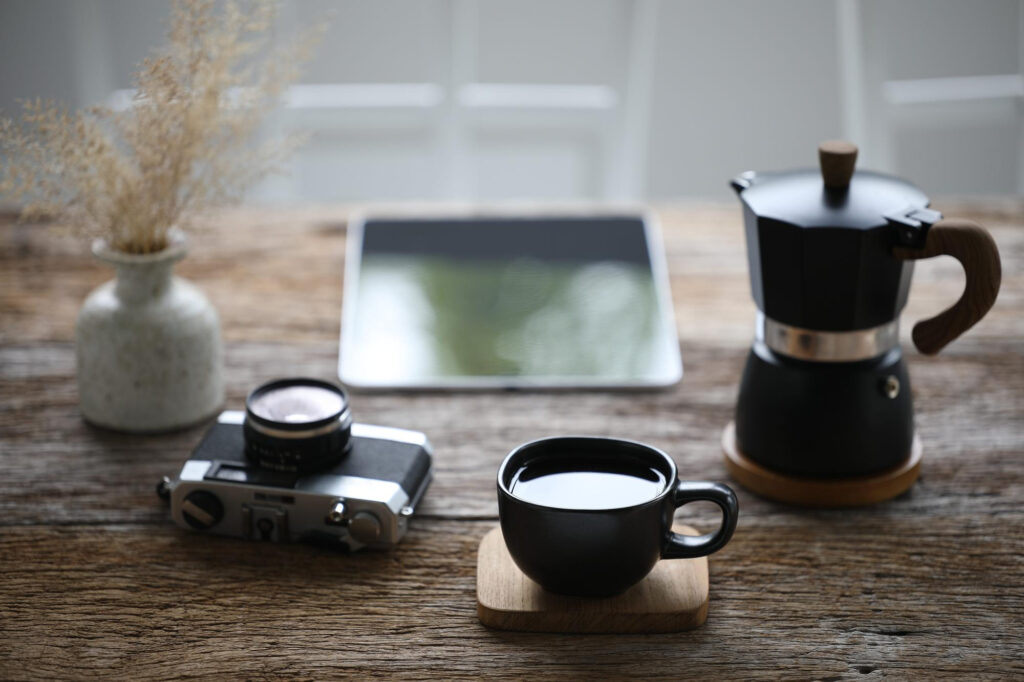Moka coffee is the most famous coffee pot in the world. He is most prevalent in Europe, especially in Italy, where he can find it in almost every Italian house, and it is rightfully considered one of the country’s symbols.
The device and its original design by Luigi de Ponti and put into production by Alfonso Bialetti in 1933. They named their coffee maker “Moka Express.”
There have been coffee makers of this type before. Take at least a coffee percolator, similar to a geyser coffee maker. However, specific details, avant-garde Italian design, and marketing company allowed Bialetti to succeed.
The coffee pot has a simple octagonal shape and of aluminum, the number one metal of that time in Italy. In the 1930s, when the economic crisis was at its worst, many Italians were poor and couldn’t go to a coffee shop very often. Bialetti came up with the advertising slogan “Espresso at home is like in a bar,” which helped to sell more coffee makers and bring more attention to them.

The coffee made in the mock is similar to espresso, it is under pressure, but the tension here is much lower – 1-2 bars versus 9 bars in an espresso machine. Thanks to a coarse filter, the drink turns out rich and fragrant, with a dense body but without sediment.
Also, today, the Moka has many different designs and improvements. For example, the Bialetti Mukka Express model has a built-in cappuccino machine, and the Bialetti Brikka has a pressure-boosting valve for making more robust coffee with foam cream.
The design of the geyser coffee maker consists of three parts: a lower compartment, an upper one, and a funnel filter in the middle.
The lower part is the base of the coffee pot, with an emergency valve and water in it. The Moka comes in different sizes and can hold from one to 24 cups with a volume of 40 ml. The capacity is determined by the size of the coffee pot itself, while the water should not exceed the valve level. The valve in the lower compartment’s side wall protects against overpressure. If the pressure exceeds the norm, the valve releases excess steam.
The filter funnel, which is in the lower compartment, is for ground coffee. The horn with a tube, the end of which is close to the bottom of the lower case. The steam pressure pushes the hot water up through the funnel tube when the water heats up. The water passes through the round filter holes and seeps through the ground coffee.
The upper part of the Moka is to collect the finished drink. It is a tank with a funnel turned upside down. You can take out a rubber seal under the horn and a filter. The filter prevents coffee particles from getting into the finished coffee. Under steam pressure, hot water passing through ground coffee follows further through the funnel spout of the upper compartment and accumulates in it as a ready-made drink. The outflow of coffee from the fixture is natural geyser beats, hence the name of this type of coffee maker.
The upper compartment to the lower one utilizes a threaded fastening, and the sealing rubber ring between them does not allow the steam to escape—the upper room has a lid, a spout for pouring coffee, and a bakelite handle. The design may seem complicated, but it is not.

Making coffee in a coffee maker
The coffee maker is into three parts—water into the lower compartment, up to the level of the emergency valve (not higher). There are two options: pour cold water or hot.
In the first case, the preparation will take a little longer, and the drink may turn out to be more bitter since ground coffee will rise from the walls of the coffee maker, and coffee particles may even burn while the water is boiling. In the second case, we can avoid this. When hot water immediately, it will create steam pressure faster and, accordingly, the cooking itself will also accelerate. But here, you need to be careful not to get burned.
To make coffee in Moka, you need an average grind, similar to granulated sugar. The volume of ground grains by the size of the coffee maker itself, or the funnel filter, is laid down by the manufacturer. The funnel filter is filled to the brim and evenly distributed. While there is no need to tamper with the coffee, you can press down a little with a spoon on top to create a good tablet.
If there is too little coffee in the funnel, the water will pass along the path of less resistance, and the drink will turn out to be watery.
Next, pour the grains through the funnel into the lower water tank, and put a coffee collector on top. The drink is prepared over low heat so that it is easier to monitor and the extraction does not proceed excessively quickly. The brewing temperature starts from about 65 °C and gradually rises to 95 ° C. Whenever the water starts to boil. You’ll hear a hiss and be able to pour ready-made coffee from the upper compartment.
We will continue until there is enough water in the lower tank. After almost all the water comes out, boiling water with steam will flow by characteristic “snorting” sounds. It is best to remove the coffee pot from the fire until this moment. With time and experience, it will be possible to predict it. But if the reaction has already started, you can stop it by placing the bottom of the coffee pot in cold water. Otherwise, hot steam can spoil the drink, making the coffee overcooked and bitter.
After the coffee is ready, you can pour it into cups. By the way, if you like to add various spices to coffee: cinnamon, cardamom, cloves, or others, you can add them directly to the ground grains in the funnel. And if you like coffee with milk, then you can warm it up by pouring it into the upper part of the Moka in advance. The main thing is not to overdo it with volume.

Moka Coffee Service
Moka is not whimsical in service. Reliable metal parts have served for many years. Only the rubber gasket will have to every few years, which wears out from friction and can leak steam. It is also necessary to clean the emergency valve from contamination several times a year. For this purpose, a unique movable wand is in it.
If the coffee pot is of aluminum, it is best to wash it under running water without using hard sponges or detergents. Strong friction or chemical exposure can break the inside surface, making the coffee taste metallic. It is best to leave the oil coating from the coffee unscathed. Allow the water less contact with the metal and preserve the drink’s taste.
The use of the dishwasher depends on the specific model. Here you need to look at the instructions. It is better not to wash classic aluminum models this way because they can lose their shine if you do what.



